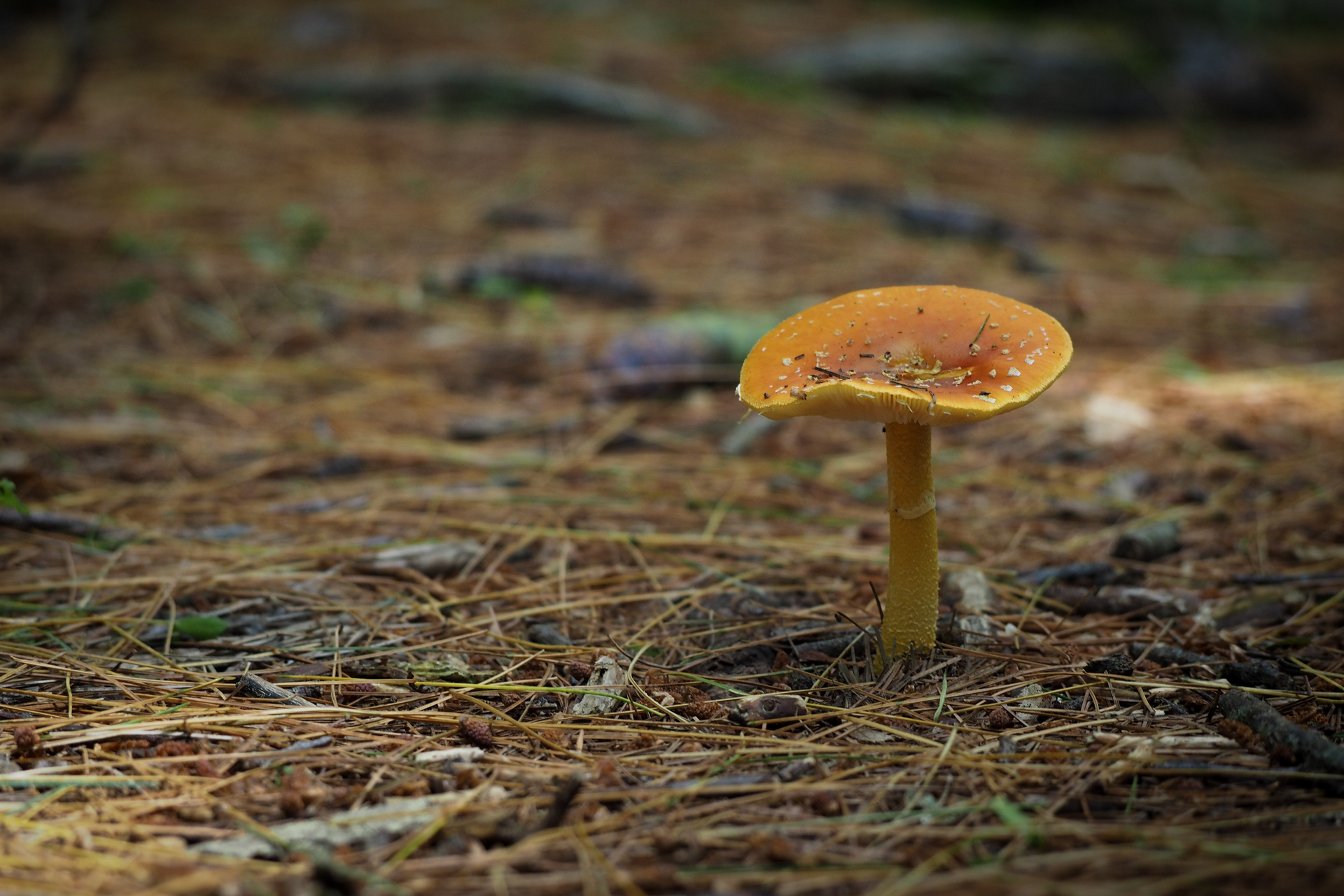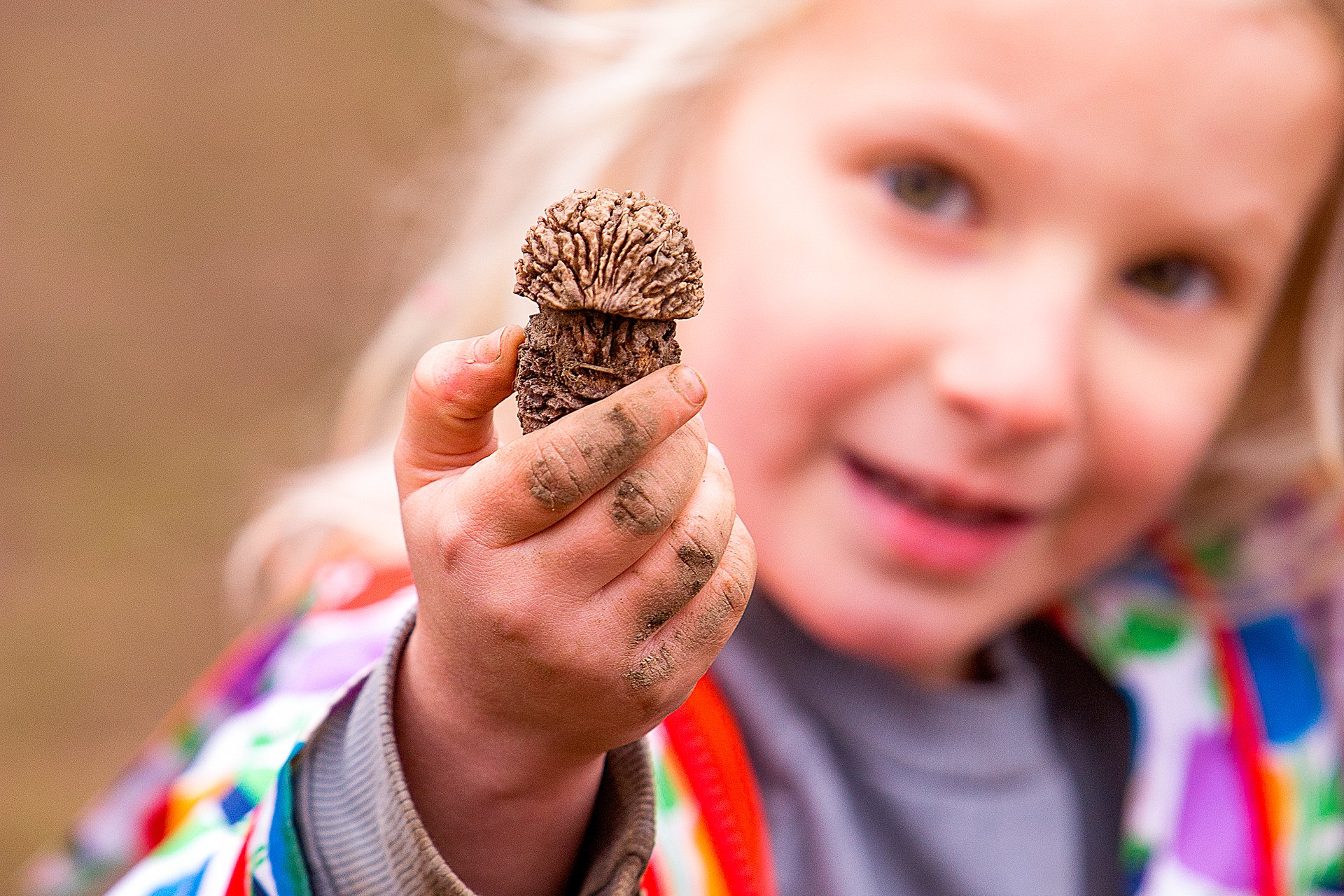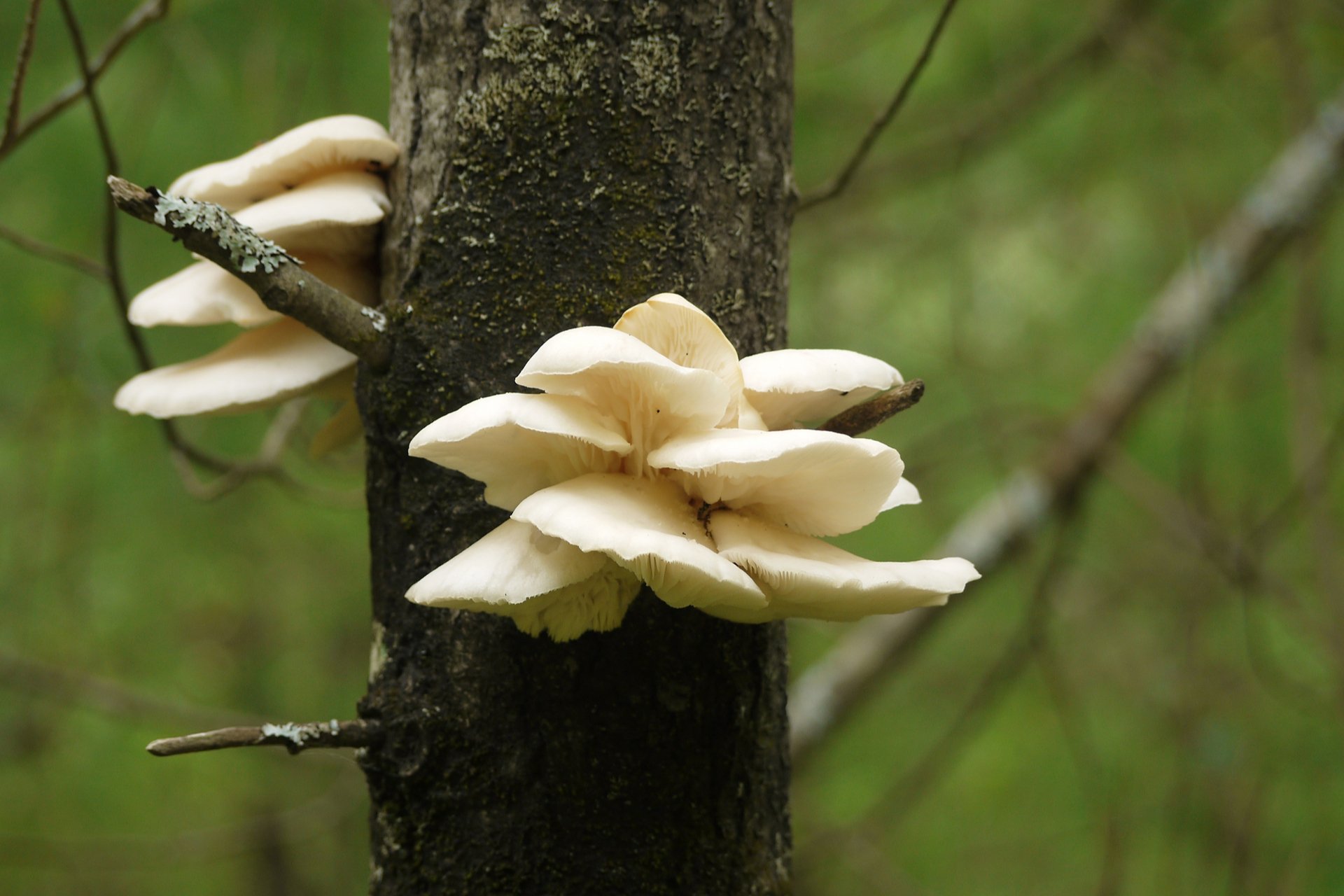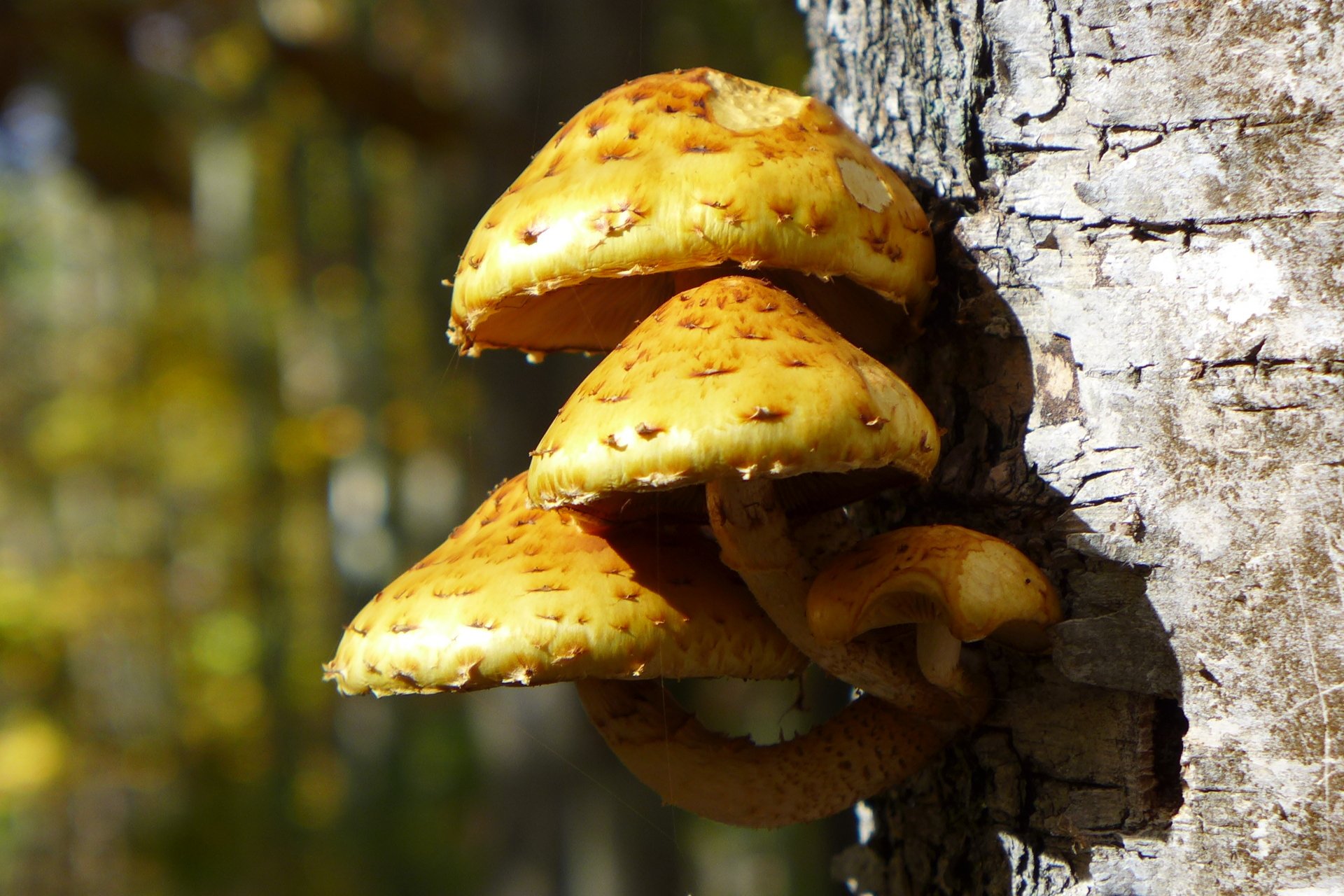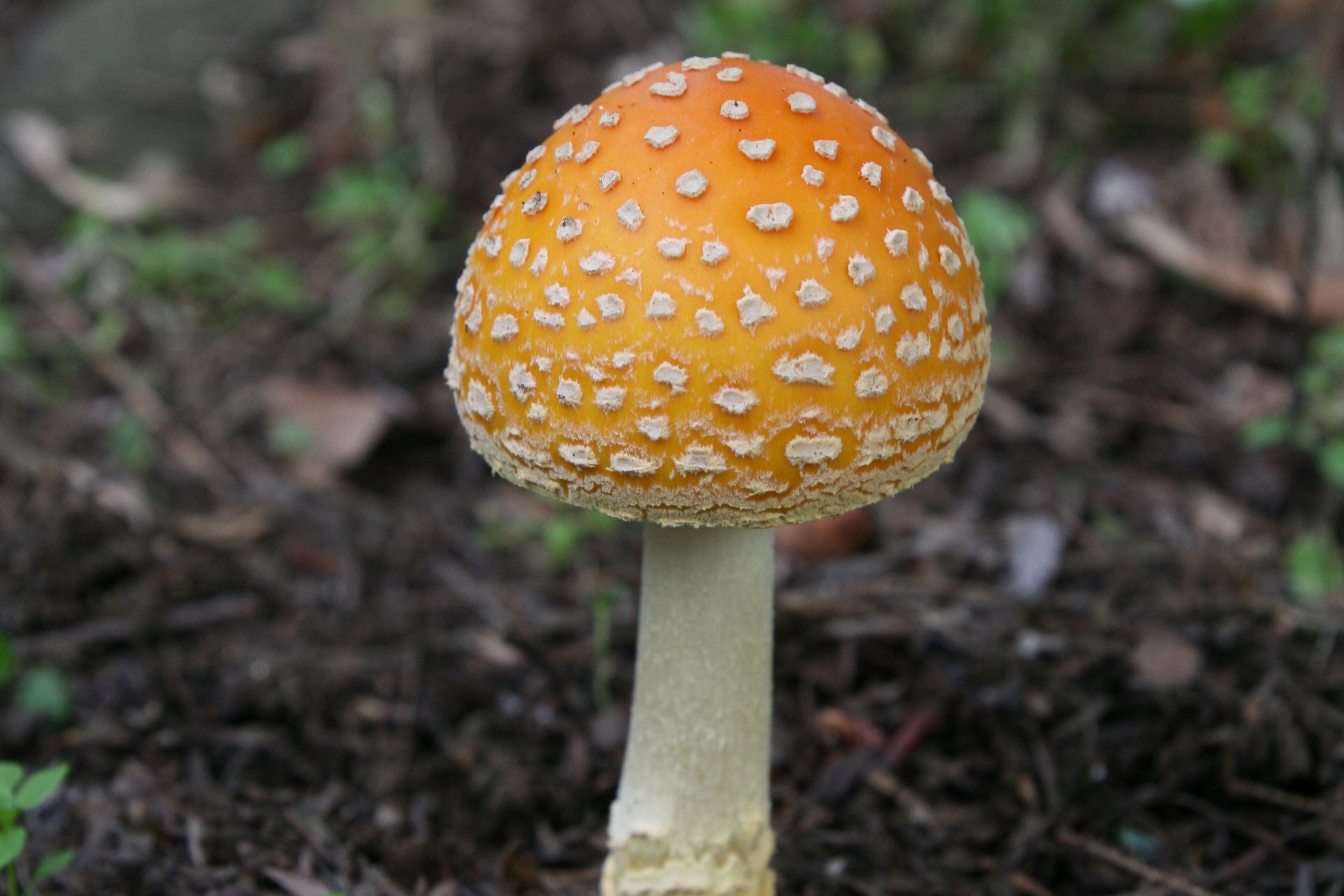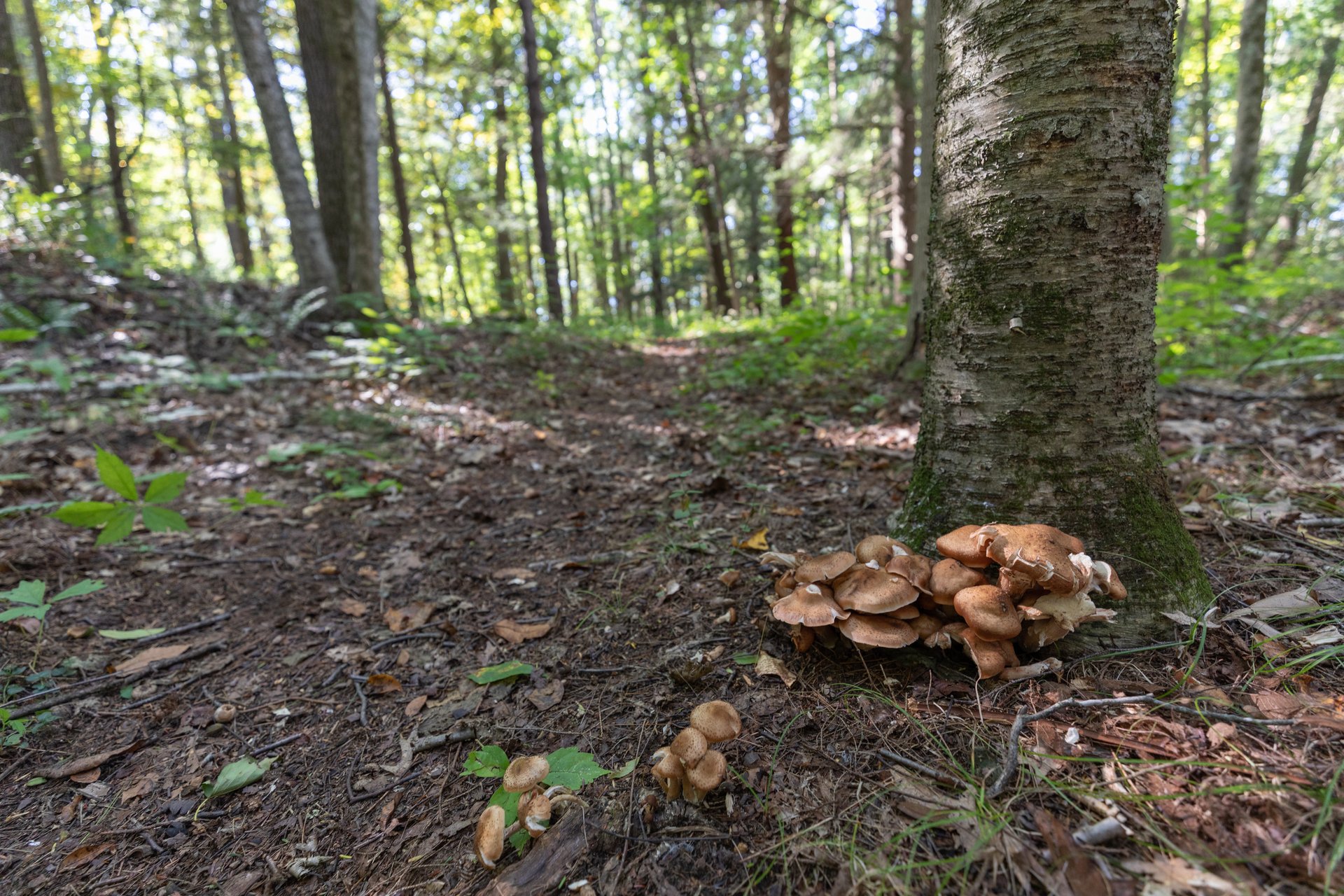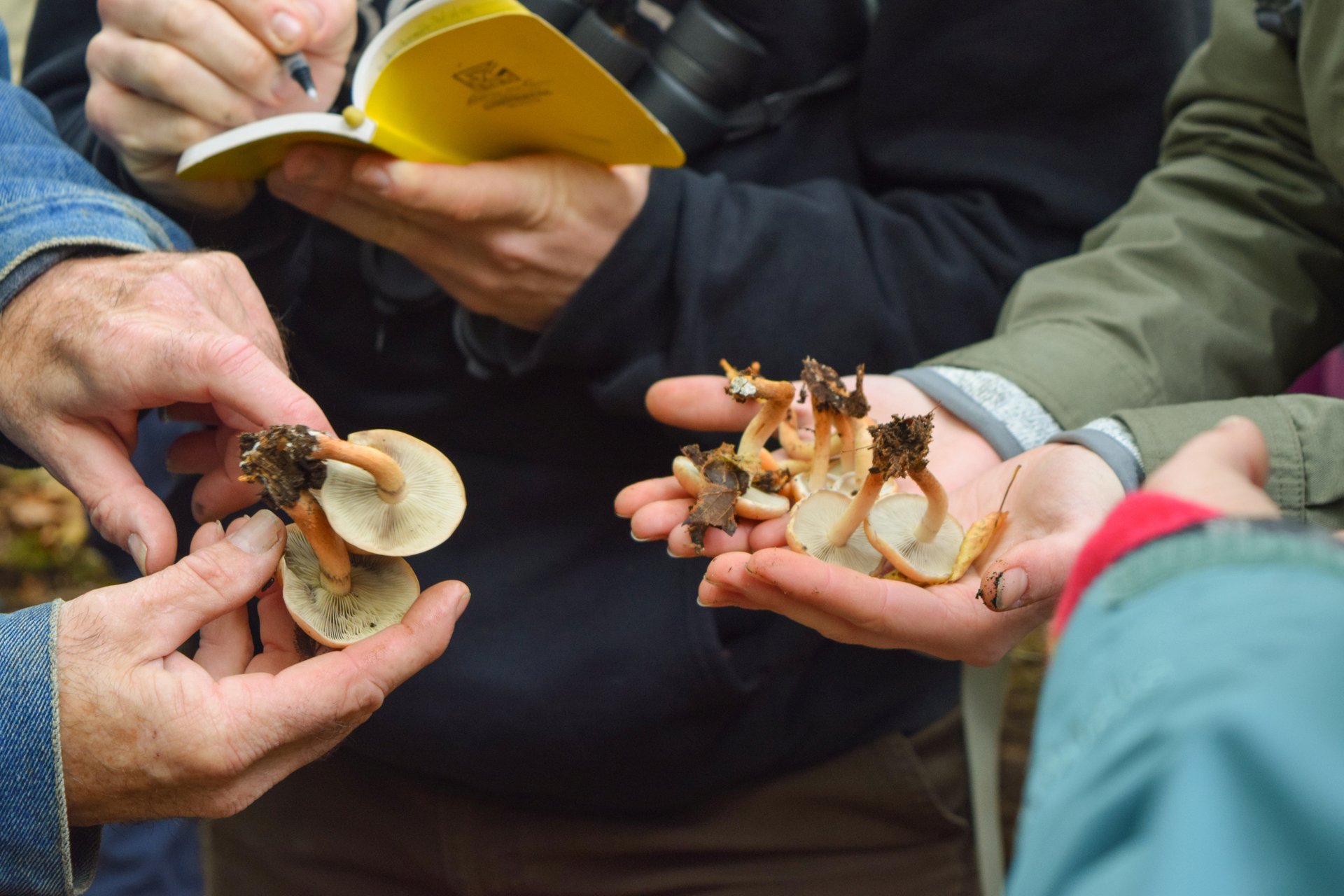In the fall, look up for foliage and look down for fungi. These mysterious and fascinating organisms are most noticeable toward the end of summer, with a peak of abundance in October, provided sufficient fall rains. Every walk in the woods looking for mushrooms is like a unique treasure hunt.
Depending on the weather, the time of year, and what trees are around, you’ll see a different cast of fungal characters. Will you find gorgeous glossy red and orange varnish shelf mushrooms or clear, glistening witch’s butter? Will you be fortunate enough to detect the elusive blue-green cup mushrooms or the surprising insect-attracting aroma of the stinky squid stinkhorn? Get all the mushroom basics here.
Fungi 101
Visible mushrooms are the reproductive structures of masses of fungal tissue, mycelia, that live in soil or other substrates, such as dead wood. Feeding cycles begin once the soil is thawed in the spring and continue until temperatures drop in the fall. As decomposers, fungi live in their food source, dispersing enzymes to break down organic compounds into smaller, more digestible components. Fungi usually live until they exhaust their food supply; in the case of wood-decay fungi, that could be months or even years.
Different fungi rely on different food sources. Some fungal species are symbiotic with trees, especially pines and oaks, in Massachusetts. These fungi feed on sugars that the trees provide, and in turn may protect the trees from disease and drought.
As you may be tempted to forage, know that some mushrooms are poisonous, even deadly. Never pick mushrooms to eat unless you are absolutely confident in your identification, and even then, take care with new species/areas. And remember: foraging, including picking mushrooms, is strictly prohibited at all Mass Audubon wildlife sanctuaries. Please help protect these natural habitats by leaving everything as you found it.
Where to Look for Fungi
Our state is home to more than 1,000 distinct species of mushrooms, ranging from minuscule ones up to giants nearly half a meter across. You can find mushrooms in every color of the rainbow, shaped like umbrellas, cups, coral, seashells, and stars.
A forested landscape full of mature trees and fallen dead wood is ideal for encountering the maximum number of different mushroom species, so it makes sense to start your hunt at Mass Audubon’s forested sanctuaries.
Pro Tips for Finding Fungi
- Look around the bases of pines and oaks, especially early in the fall, for symbiotic mushrooms and fallen branches, dead logs, and standing snags for wood-feeding species.
- Plan your trip for a day or two after rain, for best results.
- If you’re especially adventurous, go while the rain is falling, and find some of the special mushrooms that appear during wet weather and quickly disappear when things dry out.
We Recommend Visiting...
Prime Mushroom Programs
See MoreMass Audubon fungi and mushroom programs are the best way to understand what to look for and where to look. Our naturalists explain the ecologically important roles of these organisms and how they interact with other living things in the environment. You’ll learn what the parts of a mushroom are and what they do, why they come in so many shapes and colors, and if they glow in the dark or not!
Fungi Field Walk
-
Broadmoor Wildlife Sanctuary, Natick
-
Saturday, October 25
1:00-3:00pm
Adults
Tiny Trekkers: Digging into Dirt
-
Pleasant Valley Wildlife Sanctuary, Lenox
-
Tuesday, November 4
10:00-11:30am
Families - children 0 - 5 years
Looking Closely: The Art and Ecology of Mushrooms
-
Museum of American Bird Art Education Center, Canton
-
Friday, November 7
10:30am-12:30pm
Adults
The Wonder and the Wow: Maritime Forest Walk
-
Crane Beach, Ipswich
-
Saturday, November 8
9:30am-12:00pm
Adults
Fall Nature Walk
-
Blue Hills Trailside Museum, Milton
-
Saturday, November 29
10:00-11:00am
Adults & Families - 0 - 17
Stay Connected
Don't miss a beat on all the ways you can get outdoors, celebrate nature, and get involved.



